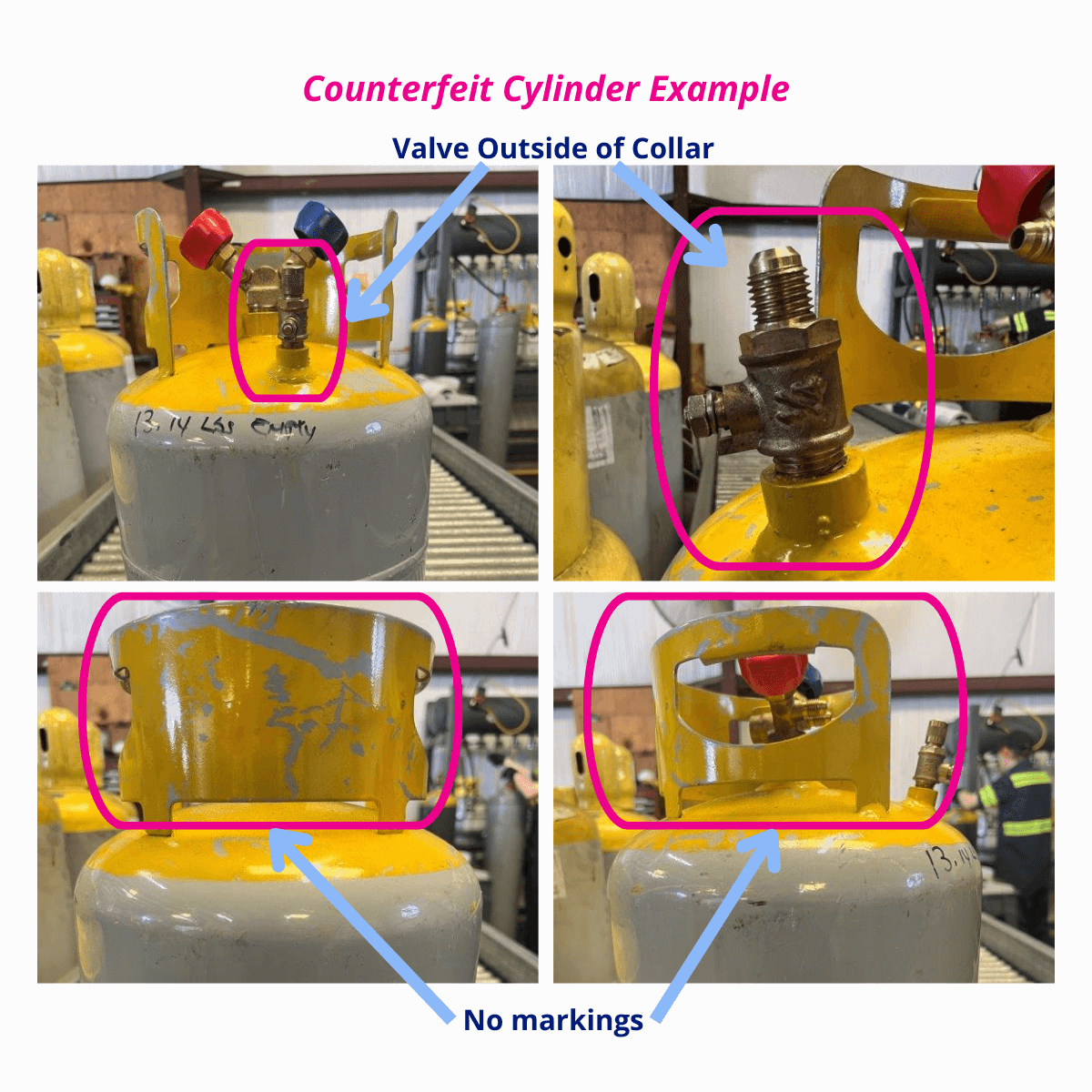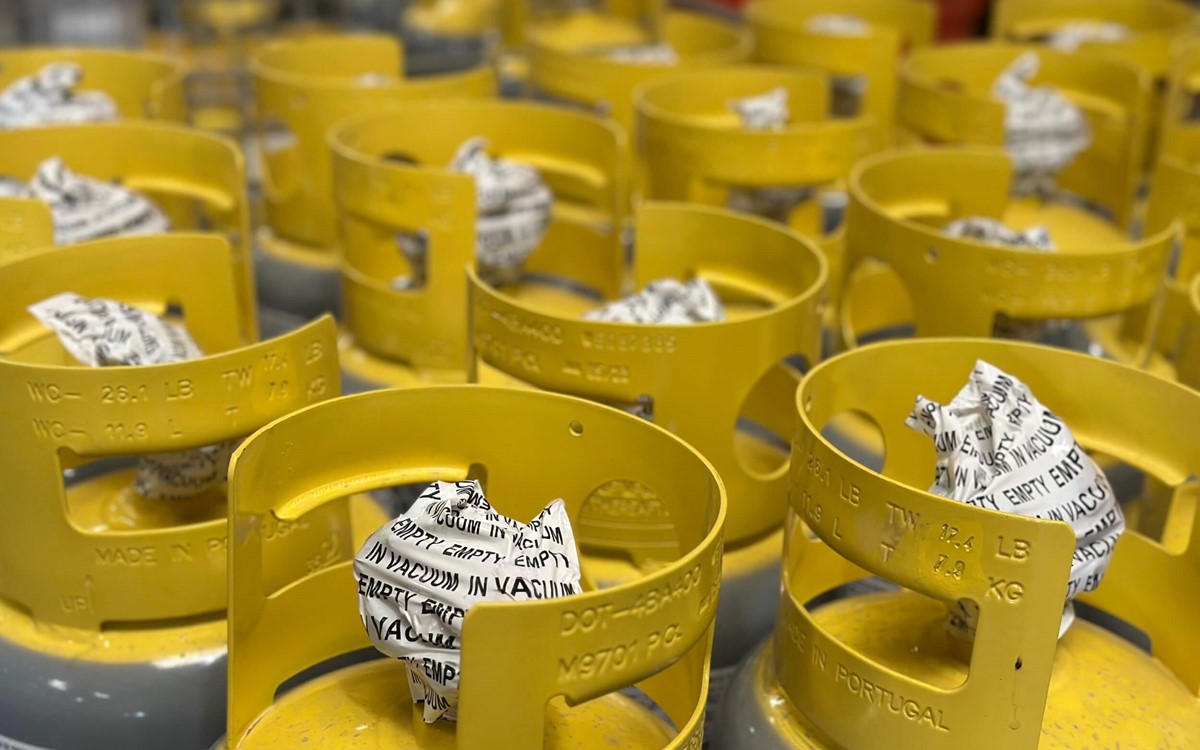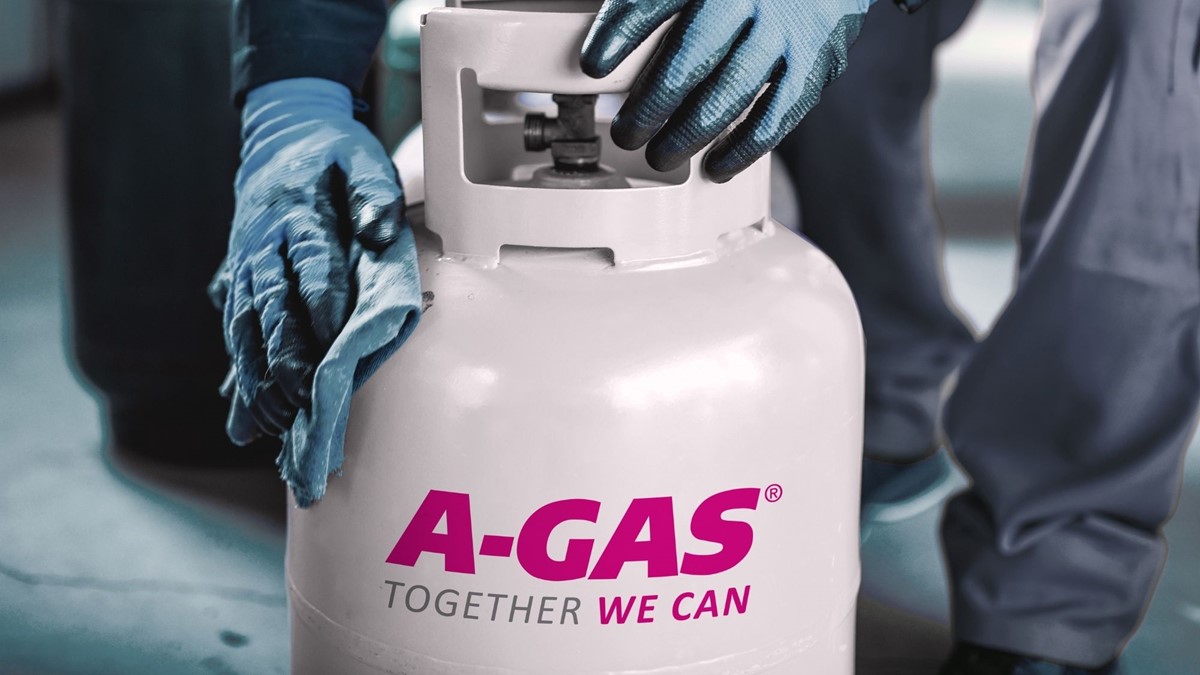
Safeguarding the Environment and Yourself:
The Importance of DOT-Certified Refrigerant Recovery Cylinders
Recently, the HVACR industry has been managing a new challenge when it comes to refrigerant management: counterfeit refrigerant recovery cylinders. While the industry understands the importance of refrigerant recovery—it safely contains refrigerants, prevents them from being released into the atmosphere, and enables refrigerant reclamation and reuse—this current challenge highlights an awareness gap of what makes a recovery cylinder Department of Transportation (DOT)-certified.
With A-Gas’ deep commitment to safety and quality, we find it critical we share this message to keep technicians and anyone who travels on the road safe. Not all recovery cylinders are created equal!
Why are DOT-Certified Recovery Cylinder Important?
The Department of Transportation (DOT) sets rigorous safety standards for containers used to transport hazardous materials, including refrigerants. These standards ensure the cylinders can withstand the pressures associated with compressed refrigerants and prevent failures.
Here's a breakdown of why using in-date DOT-certified recovery cylinders is crucial:
- Safety: Refrigerants are pressurized liquids. A faulty cylinder could rupture under pressure, causing serious injury or property damage. DOT certification guarantees the cylinder meets safety regulations and can handle the pressure of the refrigerant it's designed for.
- Environmental Protection: Improperly sealed or damaged recovery cylinders can leak, releasing refrigerants into the atmosphere. DOT-certified cylinders minimize leakage risks, protecting the environment.
- Compliance: EPA and DOT regulations in the US mandate the proper handling and disposal of refrigerants. Using non-certified cylinders can lead to hefty fines and penalties.
- Insurance Coverage: In case of an accident involving refrigerant leaks or cylinder failures, using non-certified cylinders could invalidate insurance coverage, leaving you financially liable. Be familiar with your policy.
- Supply Chain Integrity: Refrigerant recovery enables reclamation and the future re-use of refrigerant gases. But future re-use is impossible if the recovered refrigerant is not properly contained in certified cylinders, leaking into the atmosphere before it is reclaimed. As the phasedown of HFC production and importation tightens under the AIM Act, recovering and reclaiming every pound of gas possible becomes more critical to the future supply of HFCs and other legacy refrigerants. We like to say, Every Ounce Counts™.

Identifying DOT-Certified Recovery Cylinders
Counterfeit recovery cylinders look similar to legitimate DOT-certified cylinders but lack rigorous testing and construction standards. They pose a significant threat to safety, the environment, compliance, and the industry.
The industry has seen counterfeit cylinders from a few brands. If you have a cylinder in question, contact us or your A-Gas representative directly.

Here are some key things to look for when purchasing or accepting a refrigerant recovery cylinder as part of a cylinder exchange program, like Rapid Exchange® or Refri-Claim™:
- DOT Markings: A genuine DOT-certified cylinder will have a clear and permanent DOT marking etched into the metal. This marking includes the DOT symbol, a specification number, and the service pressure rating. In the example on the right, this is the DOT-4BA400 marking:
- DOT: Department of Transportation Symbol
- 4BA: Specification Number
- 400: Service Pressure Rating
- Manufacturer Information: The cylinder should display the manufacturer’s number (M-Number) to identify the cylinder’s manufacturer. The date of manufacture is also listed on the cylinder. Approved DOT cylinder manufacturers and PHMSA Pressure Vessel information can be found on the DOT’s website, with additional information on M-Numbers and Registration Numbers (R-Number) in this brochure. In the example on the right, this is the M9701 number and date below it, 11/19.
- Visual Inspection: The cylinder should be free from dents, cracks, or signs of corrosion. Any visible damage can compromise the cylinder's integrity. You can access our Safe Cylinder Checklist as a resource for your technicians.

It's crucial to purchase recovery cylinders from reputable HVACR supply stores or work with a trusted cylinder exchange program that can guarantee the authenticity and certification of their products. We also recommend you become familiar with the general requirements for specification cylinders, which are outlined in 49 CFR § 178.35(f).
Beyond Certification: Safe Handling Practices
Using a DOT-certified cylinder is just one aspect of responsible refrigerant recovery. Here are some additional safety practices to follow:
- Technician Training: Ensure technicians are properly trained on refrigerant handling procedures, including safe recovery techniques and the proper use of recovery equipment. Anyone handling refrigerant will have this background as part of their 608 certification but reinforcing that training when onboarding new technicians will communicate your commitment to safety and compliance. A-Gas has a comprehensive in-house training program for our EPA-certified technicians who provide on-site refrigerant recovery services as part of Rapid Recovery® or swap cylinders as part of our Rapid Exchange® cylinder swap program.
- Regular Cylinder Maintenance: Inspect recovery cylinders regularly for any damage or leaks. Have them pressure tested and recertified every 5 years. At A-Gas, we do this at every step of our process.
- Record Keeping: Maintain accurate records of the type and quantity of refrigerant recovered in each cylinder. This information is crucial for proper disposal or recycling. Using our proprietary in-house cylinder tracking platform, CylTrak®, we use barcodes to track everywhere a cylinder has been since the day it first arrived at one of our facilities. We can track what products are in it, what has previously been in it, and the certifications for the gases. This is also how we can ensure that all of our A-Gas-owned cylinders are within the DOT test date.
- Pressure Ratings: Adhering to DOT and EPA pressure ratings on recovery cylinders keeps technicians safe. Recovery weights should never exceed 80% of the recovery cylinder capacity. The pressure of a refrigerant at 131 degrees F should not exceed 5/4 of the cylinder’s service pressure. Always verify the weight recovered in each cylinder and each cylinder’s required refrigerant service pressure against a Refrigerant Maximum Net Recovery Weights Chart. You can learn more about recovery cylinder pressure ratings and access a Refrigerant Maximum Net Recovery Weights Chart on our website.

By prioritizing safety, the environment, and legal compliance, HVACR professionals can ensure the safe and responsible management of refrigerants. Using DOT-certified recovery cylinders is a non-negotiable step in this process.
With certified equipment, technicians can safeguard themselves and the environment, while ensuring they operate within legal regulations. Remember, a small investment in a certified cylinder can prevent major safety hazards and environmental damage.
You can learn more and get answers to frequently asked questions about cylinder testing on our website.



